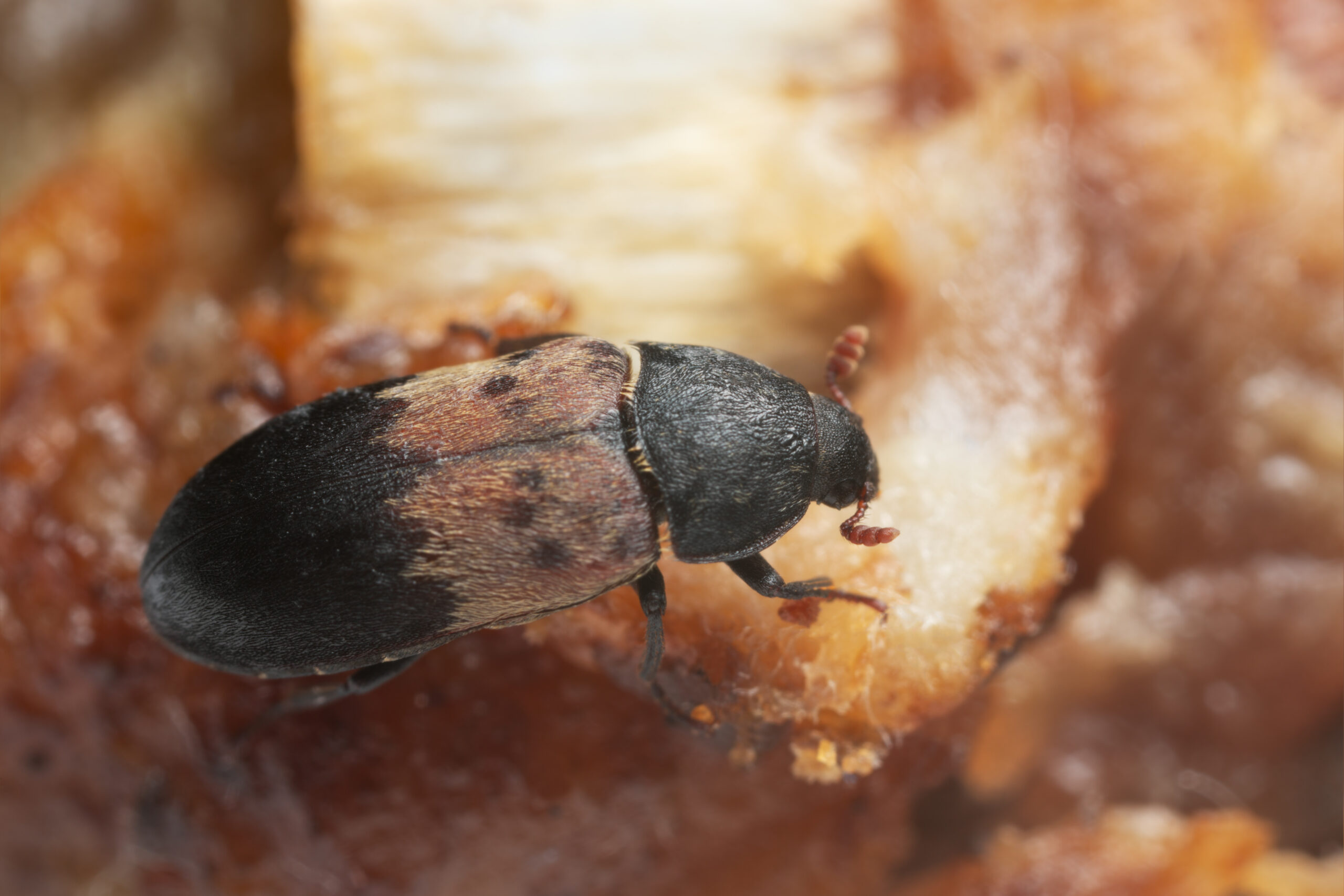Summary: Larder beetles are lesser-known pests that are commonly found in dry goods. This blog dives into the lives of larder beetles, breaking down the facts into distinct sections. Homeowners and business owners are encouraged to learn about the physical features, favorite foods, life cycles, risks, and original spots of these pests. By protecting dry goods, people can prevent larder beetles from ruining them. Romney Pest Control is dedicated to solving current pest issues and preventing future ones.
If you’ve never heard of a larder beetle, just picture a generic small, brown beetle that enjoys dried goods, and you’ve pretty much got it. These beetles are named after their frequent visits to larders, cool areas used for storing food prior to the invention of refrigerators. Even though larders were replaced with pantries and cabinets, larder beetles are still a nuisance today. Let’s dive into the short lives of these strange beetles and learn why they are so common yet easy to miss…until it’s too late.
Just The Facts
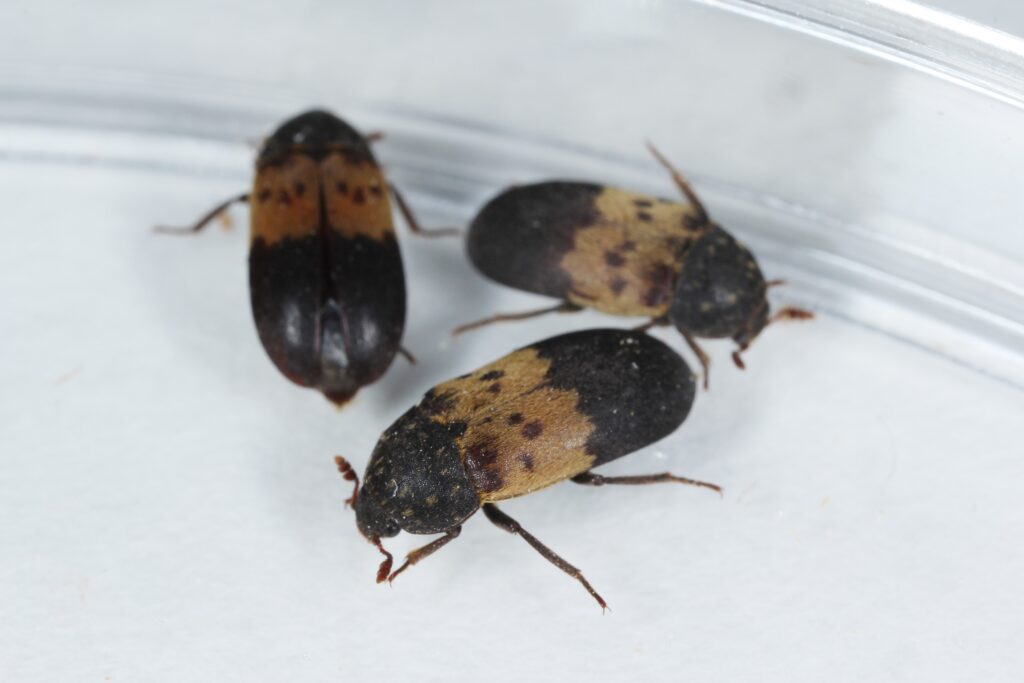
Before we get ahead of ourselves, we should discuss the basic facts of these pests. After all, what’s the point of learning the risks of a larder beetle invasion (more on that later) if we don’t know what the beetles even look like? They usually invade houses in late summer and early fall, then overwinter in their new food sources until the females start laying eggs in the spring.
Adult larder beetles are:
- 1/4 to 1/3 of an inch long
- Dark brown in color
- Oval-shaped
- Marked with a dark cream-colored band on their wing covers
- Equipped with strong mandibles (mouthparts)
Food, Wonderful Food

It’s interesting that, even with their affiliation with kitchens, larder beetles don’t usually feed on our stored food. They certainly have the mandibles for it; larder beetles can chew through plastic, cardboard, and paper packaging! But larder beetles desperately need protein to gain enough energy for reproducing and finding more food for their growing family. In fact, they feed on other insects and animal parts more often than our food.
Larder beetles usually feed on:
- Dead insects and small critters
- Dry dog or cat food
- Animal hides
- Feathers
- Cheese
- Dried meat
- Tobacco
Larder beetles prefer to feed in the dark, so they are easy to miss until their numbers grow. Similar to spiders, they can actually alert us to a different pest problem if the larder beetles are constantly feeding on the same bugs. Box elders are a common food source for larder beetles, which makes sense considering both bugs invade structures during the same time of year.
The Invasion Factor
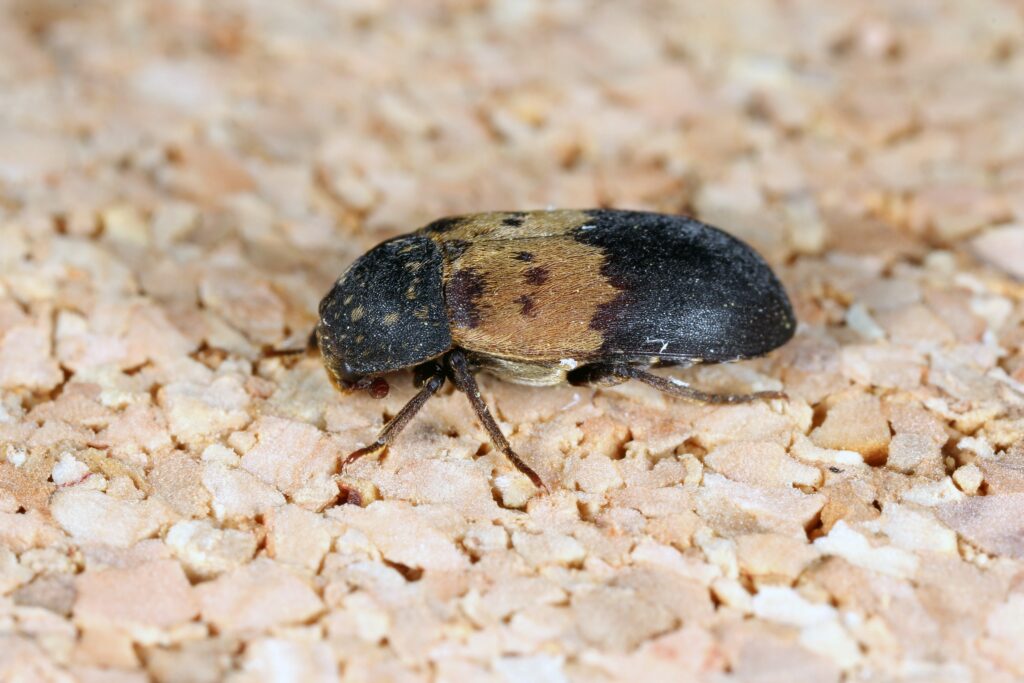
Larder beetles are small enough that they can slip through the gaps and cracks in a building without attracting attention. They might make their way to a dark corner of a room that isn’t used as much, but larder beetles can invade any part of a house. The larvae need to be sheltered while they pupate, leading them to bore into wood or insulation before gradually changing into adults.
Unlike carpenter ants and termites, larder beetle larvae don’t ruin the wood they invade. If there’s a lot of larvae in one place, the wood could be damaged by the numerous holes. They do ruin insulation and books by boring into those since they’re so soft. Talk about a bookworm! As long as larder beetles have a reliable food source — at any age — they will stay in one shelter forever.
Dangers Or Nuisances?
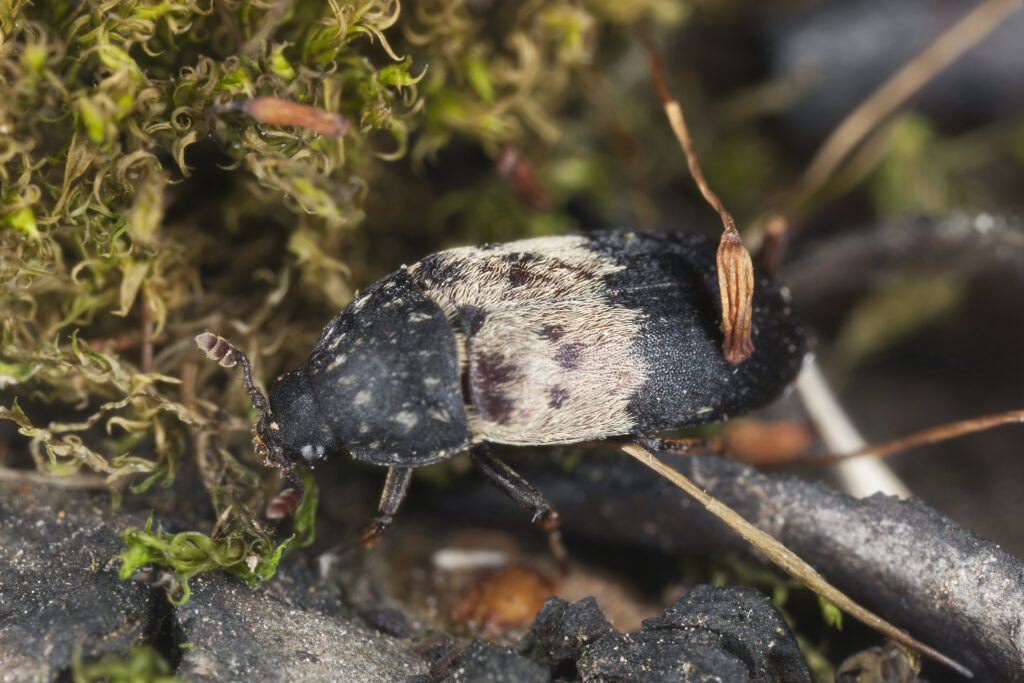
The good news is that larder beetles aren’t technically dangerous to people or pets. They don’t spread diseases or bite us, which is more than we can say about other pests (looking at you, bed bugs). But the bad news is that larder beetles contaminate every food they invade since nothing good comes out of eating bug-ridden food. They are a nuisance pest that bring sanitation concerns wherever they live.
If you have larder beetles, you want to get them out ASAP because the females reproduce so often. They lay about 100 eggs at once, directly on a food source to give their offspring a good chance at survival. The pests live for about 60 days total. Larder beetles produce 200 to 800 eggs over their lifetimes, so a small problem can turn into a major infestation before long! The key is to find them before they have the chance to multiply, but this is easier said than done.
Finding The Source Of It All
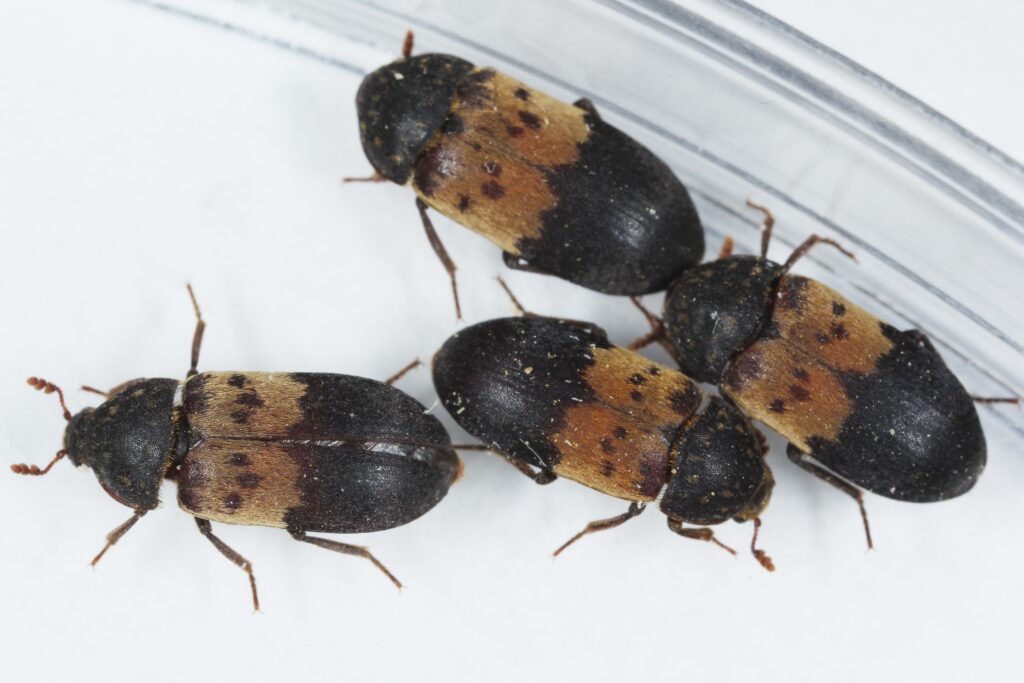
A couple of larder beetles aren’t an emergency, but an entire invasion definitely warrants concern. The only way to truly solve a larder beetle problem is to find the source of their numbers. In other words, find the highest concentration of larvae and adult beetles. This usually tends to be in the attic, crawlspace, wall voids, or pantry. If you don’t know where to start, try looking in your food storage areas (pantry, cabinets, etc.) to see if there are any beetles near the containers. They could be digging into the wall just behind the food, so you may need to move things around.
Another common habitat is a bit more alarming, but it’s important to mention. Larder beetles are known to feed on dead rodents and their food stashes, so if you see a lot of beetles going into an inaccessible part of the house, they could be interacting with a rodent infestation! With this in mind, it’s best to contact your local pest control provider and ask them to inspect the areas that you see the most larder beetles. It could just be a simple beetle infestation — or it could be a two-for-one pest special!
Protect Your Pantry With Romney
Nothing puts us in a bad mood faster than finding a family of larder beetles — or any pantry pest, for that matter — in our favorite snacks! That’s why the local pest experts of Romney Pest Control are committed to solving each pest issue with the utmost care and efficiency. We carefully inspect the property before creating a customized treatment plan that gets to the root of each pest problem. Our top priority is your complete satisfaction with our services, so we don’t leave any pest untreated. We not only solve your current pest issues, we also prevent future pests from causing the same problems later. To learn more about our long-term pest solutions, contact our team today!
Citations
Hahn, J. (2024). Larder beetles. University of Minnesota Extension. Retrieved July 22, 2024, from https://extension.umn.edu/product-and-houseplant-pests/larder-beetles
Larder beetle. (n.d.). Terminix. Retrieved July 22, 2024, from https://www.terminix.com/other/beetles/larder/
Larder beetle facts & information. (n.d.). Orkin. Retrieved July 22, 2024, from https://www.orkin.com/pests/beetles/larder-beetles

